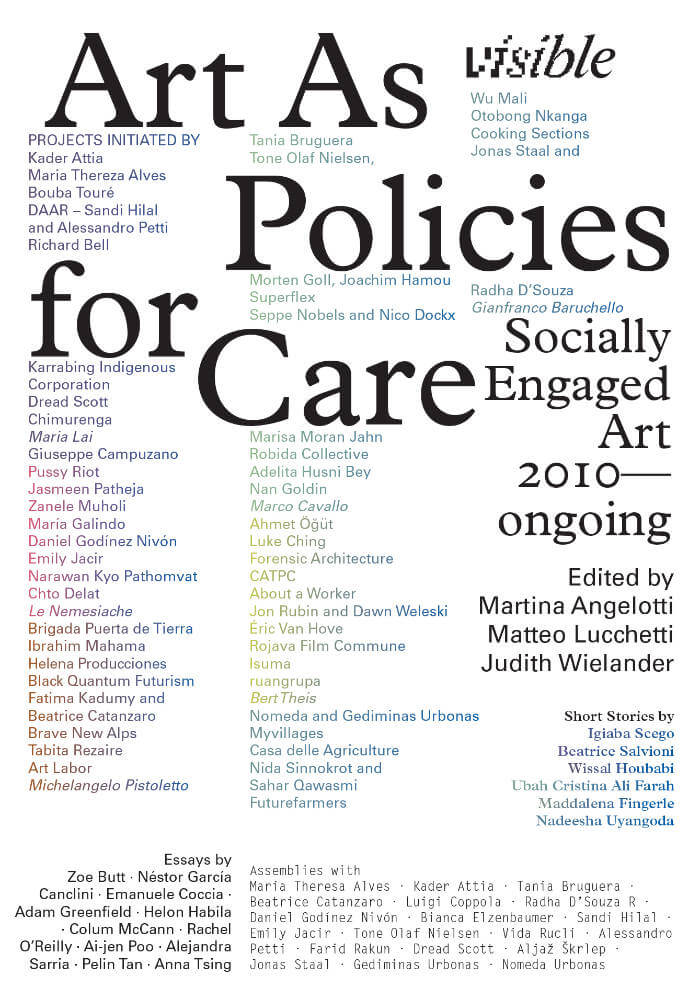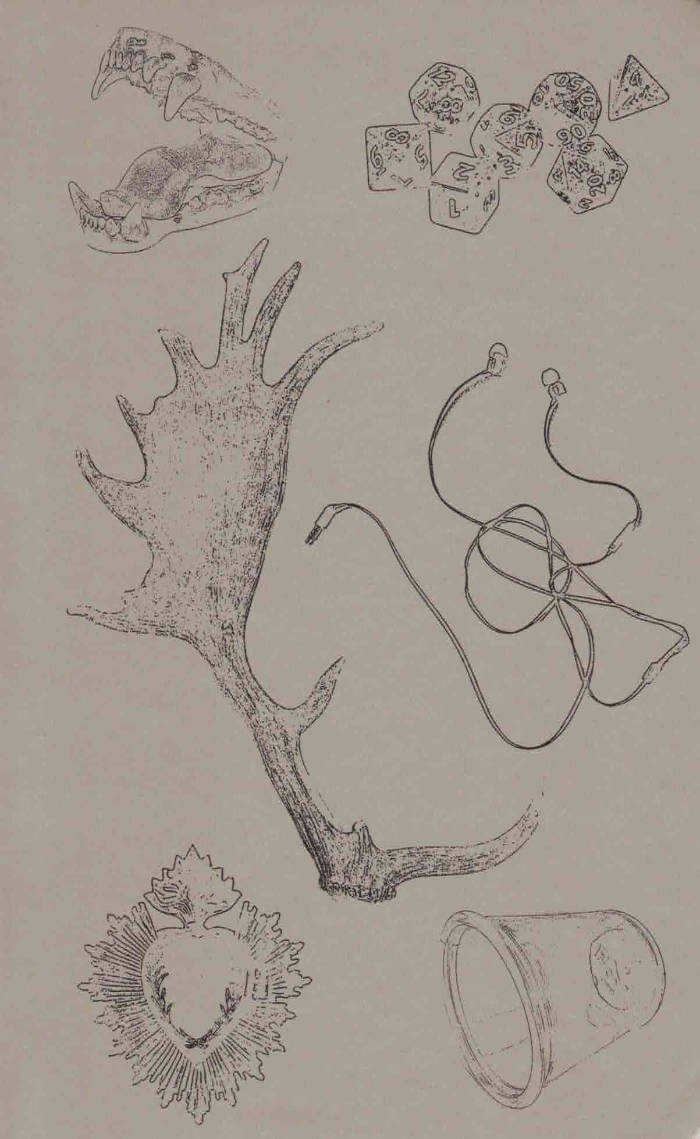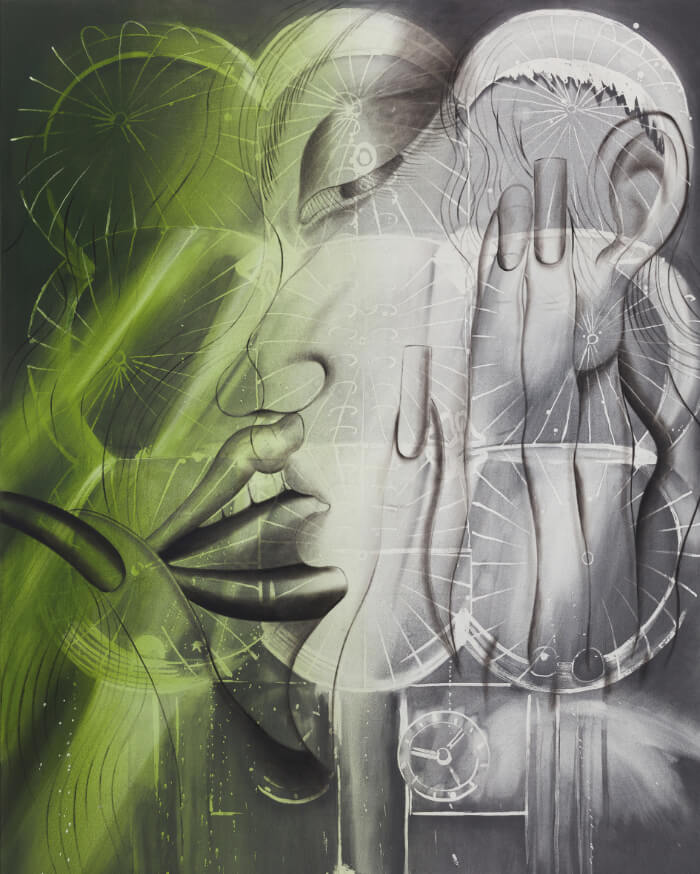
Visible – Art as Policies for Care – Socially Engaged Art (2010-Ongoing)
Judith Wielander ed., Matteo Lucchetti ed., Martina Angelotti ed.
Comprehensive documentation on 43 outstanding socially committed artistic projects over the past twenty years.
The book Visible: Art as Policies for Care. Socially Engaged Art (2010–Ongoing) was born from the editors' enduring curatorial research into long-term situated art projects that exist within the social sphere, beyond the logic of the traditional art system, confronting unjust systems, and prefiguring novel visions for living together.
The socially engaged art projects collected here hold a significant place in the constantly evolving trans-local art scene of the past two decades, and form a lens through which to observe changing realities and their urgencies; they redefine the concept of art in light of current climatic, political, and social changes and foster the dematerialization of the artwork in processes that become policies of culture and care.
The publication is composed of four main sections with overarching photo documentation—interviews, essays, forums, and short literary texts—collecting contributions by artists, anthropologists, novelists, activists, and sociologists, such as Anna Tsing, Wissal Houbabi, Maria Thereza Alves, Tania Bruguera, Jonas Staal, DAAR - Decolonizing Architecture Art Research, Giuseppe Campuzano and Nan Goldin.
Edited by Martina Angelotti, Matteo Lucchetti, Judith Wielander.
Contributions by Ubah Cristina Ali Farah, Maria Thereza Alves, Martina Angelotti, Art Labor, Kader Attia, Gianfranco Baruchello, Richard Bell, Black Quantum Futurism, Brave New Alps, Tania Bruguera, Zoe Butt, Giuseppe Campuzano & Miguel López, Beatrice Catanzaro & Fatima Kadumy, CATPC, Marco Cavallo, Chimurenga, Luke Ching, Chto Delat, Emanuele Coccia, Cooking Sections, Luigi Coppola, Radha D'Souza & Jonas Staal, DAAR / Sandi Hilal & Alessandro Petti, Nico Dockx & Seppe Nobels, Maddalena Fingerle, Forensic Architecture, Futurefarmers, María Galindo, Néstor García Canclini, Daniel Godínez Nivón, Morten Goll, Adam Greenfield, Raphaël Grisey & Bouba Touré, Helon Habila, Helena Producciones, Sandi Hilal, Kim Hou, Wissal Houbabi, Adelita Husni Bey, Emily Jacir, Karrabing Film Collective, Selom Kudjie & Ibrahim Mahama, Zacharias Kunuk, Maria Lai, Le Nemesiache, Carolina Lio, Matteo Lucchetti, Wu Mali, Colum McCann, Marisa Morán Jahn, Zanele Muholi, Myvillages, Paolo Naldini, Jesús "Bubú" Negrón, Tone Olaf Nielsen, Otobong Nkanga, Rachel O'Reilly, Ahmet Öğüt, P.A.I.N., Jasmeen Patheja, Narawan Kyo Pathomvat, Michelangelo Pistoletto, Ai-jen Poo, Pussy Riot (Nadya Tolokonnikova), Sahar Qawasmi & Nida Sinnokrot, Tabita Rezaire, Robida, Rojava Film Commune, ruangrupa (Farid Rakun), Jon Rubin & Dawn Weleski, Beatrice Salvioni, Alejandra Sarria, Igiaba Scego, Dread Scott, Superflex, Pelin Tan, Bert Theis, Anna Tsing, Nomeda & Gediminas Urbonas, Nadeesha Uyangoda, Éric Van Hove, Judith Wielander, Andrea Zegna, Anna Zegna.
Language: English







